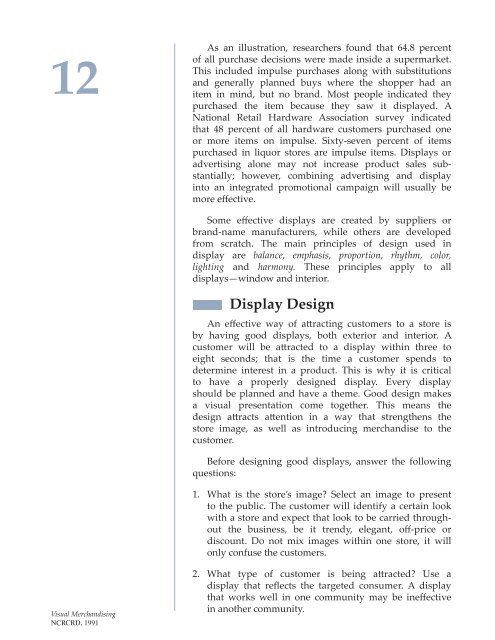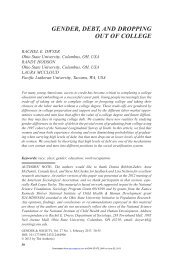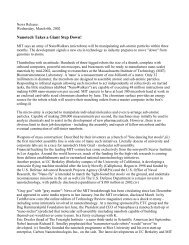Visual Merchandising - North Central Regional Center for Rural ...
Visual Merchandising - North Central Regional Center for Rural ...
Visual Merchandising - North Central Regional Center for Rural ...
You also want an ePaper? Increase the reach of your titles
YUMPU automatically turns print PDFs into web optimized ePapers that Google loves.
12<br />
As an illustration, researchers found that 64.8 percent<br />
of all purchase decisions were made inside a supermarket.<br />
This included impulse purchases along with substitutions<br />
and generally planned buys where the shopper had an<br />
item in mind, but no brand. Most people indicated they<br />
purchased the item because they saw it displayed. A<br />
National Retail Hardware Association survey indicated<br />
that 48 percent of all hardware customers purchased one<br />
or more items on impulse. Sixty-seven percent of items<br />
purchased in liquor stores are impulse items. Displays or<br />
advertising alone may not increase product sales substantially;<br />
however, combining advertising and display<br />
into an integrated promotional campaign will usually be<br />
more effective.<br />
Some effective displays are created by suppliers or<br />
brand-name manufacturers, while others are developed<br />
from scratch. The main principles of design used in<br />
display are balance, emphasis, proportion, rhythm, color,<br />
lighting and harmony. These principles apply to all<br />
displays—window and interior.<br />
Display Design<br />
An effective way of attracting customers to a store is<br />
by having good displays, both exterior and interior. A<br />
customer will be attracted to a display within three to<br />
eight seconds; that is the time a customer spends to<br />
determine interest in a product. This is why it is critical<br />
to have a properly designed display. Every display<br />
should be planned and have a theme. Good design makes<br />
a visual presentation come together. This means the<br />
design attracts attention in a way that strengthens the<br />
store image, as well as introducing merchandise to the<br />
customer.<br />
Be<strong>for</strong>e designing good displays, answer the following<br />
questions:<br />
1. What is the store’s image? Select an image to present<br />
to the public. The customer will identify a certain look<br />
with a store and expect that look to be carried throughout<br />
the business, be it trendy, elegant, off-price or<br />
discount. Do not mix images within one store, it will<br />
only confuse the customers.<br />
<strong>Visual</strong> <strong>Merchandising</strong><br />
NCRCRD, 1991<br />
2. What type of customer is being attracted? Use a<br />
display that reflects the targeted consumer. A display<br />
that works well in one community may be ineffective<br />
in another community.

















